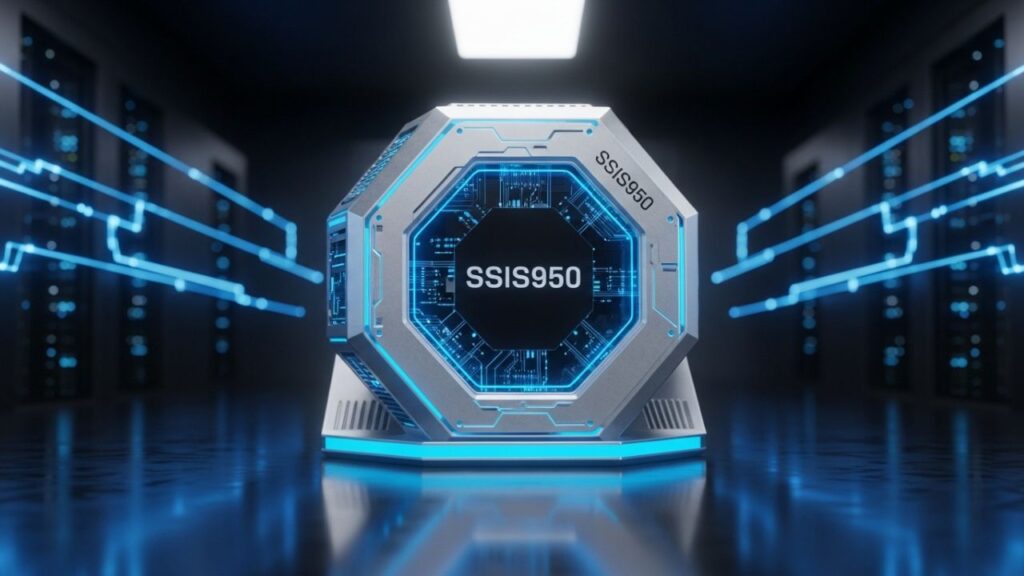Introduction
When your business is dealing with massive data volumes, multiple sources, hybrid cloud environments and real-time analytics, standard ETL tools often fall short. That’s where ssis950 comes in — a modern version of SQL Server Integration Services purpose-built for modern data workflows.
What Is ssis950?
In simple terms, ssis950 refers to the version or configuration of SSIS (SQL Server Integration Services) that introduces advanced features, better performance, and enhanced cloud/hybrid readiness.
Essentially, SSIS 950 is designed to handle complex ETL (Extract-Transform-Load) scenarios, integrate on-premises and cloud data, and scale to enterprise volumes.
Why ssis950 Matters for Modern Businesses
Handling High Volume & Hybrid Data
The era of simple relational database imports is over. Today’s companies must manage data from on-prem systems, cloud services, APIs, streaming sources, and more. ssis950 helps by offering improved connectivity and throughput.
Improved Performance & Efficiency
With SSIS 950, tasks that previously took hours can be compressed into minutes thanks to parallel processing, optimized memory usage and enhanced transformations.
Better Integration with Cloud Platforms
For organizations migrating to or operating in hybrid or cloud-first models, ssis950 provides better support for Azure (and potentially other cloud services), allowing seamless data movement between on-premises and cloud environments.
As data grows in volume, variety and velocity, using a capable platform like SSIS 950 ensures your infrastructure remains relevant and scalable to meet evolving demands.
Core Features of ssis950
Enhanced Connectivity
ssis950 supports a wide array of data sources: relational databases (SQL Server, Oracle, MySQL), flat files (CSV, XML, JSON), cloud data stores, streaming or API sources.
Advanced Data Transformation
From data cleansing, aggregation, pivot/unpivot, fuzzy lookups, conditional splits, to complex business logic tasks — ssis950 expands transformation capabilities to meet enterprise workloads.
Parallel Processing & Performance Optimization
One of the standout benefits of ssis950 is its ability to execute multiple tasks concurrently, use system memory efficiently, and reduce bottlenecks.
Hybrid & Cloud Support
Whether your data resides on-prem, in Azure, or in a hybrid configuration, ssis950 offers native connectors and architecture to facilitate data flows across environments.
Robust Error Handling, Logging & Security
Reliable ETL isn’t just about speed — it’s about integrity. SSIS 950 includes enhanced error logging, redirection, secure credential management, and supports role-based access and encryption for sensitive data.
Real-World Applications of ssis950
1. Data Warehousing & Business Intelligence
Organizations can use SSIS 950 to consolidate data from various sources into a single data warehouse, enable analytics (for example via Power BI), and deliver fresher, more trusted data to decision makers.
2. Data Migration & Modernization
When migrating from legacy systems, or upgrading to a new ERP/CRM/data platform, SSIS 950 can facilitate the extract, transform and load of large datasets while minimizing downtime.
3. Hybrid Cloud Data Integration
For enterprises with mixed infrastructure (on-prem + cloud), SSIS 950 enables seamless data flows — for instance manufacturing sensor data from on-prem IoT devices loaded into Azure for real-time analytics.
4. Real-time or Near Real-time ETL
Though ETL historically implied batch processing, SSIS 950 supports faster refresh cycles, streaming paradigms or frequent incremental loads — which is critical for industries like finance, retail, healthcare.
5. Complex Transformation Logic
In use-cases where data must be cleansed, joined, deduplicated, merged from many sources (including semi-structured/unstructured), SSIS 950’s advanced transforms simplify what would otherwise require heavy custom coding.
Best Practices for Implementing SSIS 950
Plan Your Architecture
Understand where your data comes from (sources), how it needs to be transformed (logic), and where it must go (destinations). Use SSIS 950’s connectors and transformation tools to map out the workflow.
Optimize for Performance
-
Use parallel tasks wisely.
-
Configure buffer sizes and memory settings appropriately.
-
Avoid unnecessary intermediate staging when possible.
Monitor & Log Extensively
Set up detailed logging and performance monitoring so you can catch errors early and evaluate bottlenecks. SSIS 950 supports advanced error handling and logging functionality.
Secure Your Workflows
With sensitive data in play, ensure role-based access to SSIS packages, encrypt connection strings, mask or manage sensitive columns, and audit package executions.
Choose Hybrid/Cloud Strategy Early
If you anticipate cloud or hybrid deployments, design your SSIS 950 workflows with that in mind – use Azure connectors, hybrid destinations, and avoid locking into purely on-prem architecture.
Test and Iteratively Refine
Before full production rollout, test with representative data-volumes, validate transformations, monitor resource usage, and refine the design. Real-world conditions reveal issues early.
Common Challenges & How to Address Them
Legacy System Compatibility
If you are integrating older data formats or legacy systems, SSIS 950 may require extra connectors or adaptation. Plan for potential compatibility extensions.
Resource Contention
Parallel processing is powerful, but without adequate hardware (CPU, memory, I/O), you may hit bottlenecks. Monitor and scale infrastructure as needed.
Complex Transformation Logic
Transformations that require heavy custom scripting or large-data joins may perform slower — use SSIS 950’s built-in components where possible and avoid undue complexity.
Migration between Environments
Deploying SSIS packages from development to production or across versions can cause version-mismatch or compatibility errors — ensure your SSIS catalog version and package versions align.
Data Quality & Governance
Even the best ETL engine cannot fix fundamentally poor data quality. Design cleansing and validation early, and enforce governance standards.
Why Upgrade to SSIS 950 Now?
The business value of SSIS 950 is clear: faster data processing, easier connectivity, better support for cloud/hybrid environments, and future readiness.
If you’re still using older ETL tools or earlier versions of SSIS, migrating to SSIS 950 can reduce time-to-insight, improve operational efficiency, and give you a foundation for the next generation of analytics.
Conclusion
In the modern data landscape, with diverse data sources, hybrid clouds, real-time demands and large volumes, your ETL engine must keep up. SSIS 950 delivers on that promise — offering a robust, scalable, high-performance framework for data integration. When implemented thoughtfully, back-ended by best practices and good governance, SSIS 950 becomes a strategic enabler of data-driven decision-making.
Whether you’re building your first data-warehouse, migrating legacy systems or orchestrating cloud/in-house hybrid data flows, SSIS 950 is a solution worth serious consideration.
If you like, I can also provide a step-by-step deployment guide, or compare SSIS 950 against other tools (e.g., Azure Data Factory, Talend, Informatica) — would you like that?





